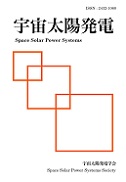Volume 6
Displaying 1-12 of 12 articles from this issue
- |<
- <
- 1
- >
- >|
Symposium article
-
2021 Volume 6 Pages 1-4
Published: 2021
Released on J-STAGE: March 10, 2021
Download PDF (772K)
Symposium article
-
2021 Volume 6 Pages 5-8
Published: 2021
Released on J-STAGE: March 10, 2021
Download PDF (726K)
Symposium article
-
2021 Volume 6 Pages 9-14
Published: 2021
Released on J-STAGE: March 10, 2021
Download PDF (1134K)
Symposium article
-
2021 Volume 6 Pages 15-21
Published: 2021
Released on J-STAGE: March 10, 2021
Download PDF (708K)
Symposium article
-
2021 Volume 6 Pages 22-25
Published: 2021
Released on J-STAGE: March 10, 2021
Download PDF (978K)
Symposium article
-
2021 Volume 6 Pages 26-29
Published: 2021
Released on J-STAGE: March 10, 2021
Download PDF (877K)
Symposium article
-
2021 Volume 6 Pages 30-33
Published: 2021
Released on J-STAGE: March 10, 2021
Download PDF (2738K)
Symposium article
-
2021 Volume 6 Pages 34-37
Published: 2021
Released on J-STAGE: March 10, 2021
Download PDF (606K)
Symposium article
-
2021 Volume 6 Pages 38-41
Published: 2021
Released on J-STAGE: March 10, 2021
Download PDF (807K)
Symposium article
-
2021 Volume 6 Pages 42-46
Published: 2021
Released on J-STAGE: March 10, 2021
Download PDF (889K)
Original article
-
2021 Volume 6 Pages 47-50
Published: 2021
Released on J-STAGE: March 18, 2021
Download PDF (708K)
Original article
-
2021 Volume 6 Pages 51-58
Published: 2021
Released on J-STAGE: April 21, 2021
Download PDF (1197K)
- |<
- <
- 1
- >
- >|
